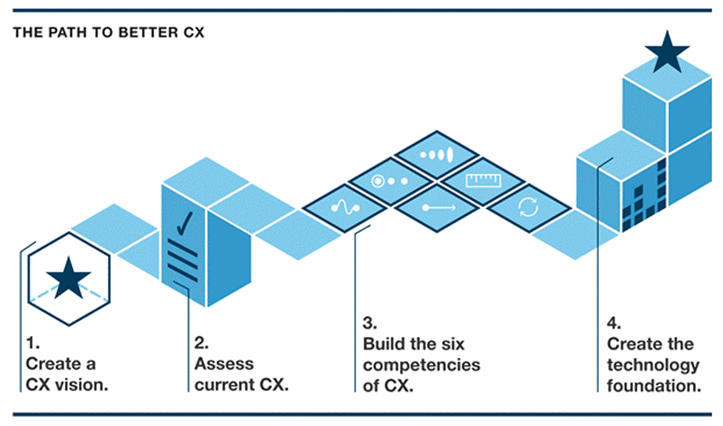Why Invest In Customer Experience?
Our research shows that customer experience (CX) leaders grow revenue faster than CX laggards, cut costs, reduce risk, and can charge more for their products. You can stop reading now …
Still Not Convinced?
We can measure this. Forrester’s Customer Experience Index (CX Index™) methodology measures how well a brand’s customer experience strengthens customers’ loyalty. In 2020, we surveyed more than 12,200 European adult customers of 57 brands in France, Italy, Spain, and the UK, including 28 of the largest and most important in banking brands across those countries. In 2020, First Direct and Monzo were the first banks in Europe to achieve CX Index scores in the “excellent” category:
- Monzo delivered the highest percentage of easy and emotionally positive experiences of all the banking brands we measured in the European CX Index, with 38.5 positive experiences for every negative experience — the highest proportion of positive to negative experiences in European banking.
- First Direct leads in Europe on all five drivers within our customer service driver category, outperforming competitors by at least 9 percentage points in each.
We also plotted the potential financial impact of improving your CX score by just 1 point across a range of industries. Depending on your industry, it could put millions on your bottom line. The benefits include increased retention, higher cross-sell and upsell potential, more new customers, and reduced cost to serve customers. For example:
- ScottishPower decreased churn by 31% by eliminating no-value-added touchpoints in common user journeys.
- Lloyds Banking Group revamped mobile tools to make it easier and faster for customers to check their eligibility for personal loans. Subsequently, overall credit acceptance and path-to-purchase increased by 40%.
Most Organisations Struggle To Differentiate
Top-scoring mutuals and direct banks like ING and Monzo raised customers’ expectations of their banking experiences. But we see large divides separating a handful of top-scoring mutuals and direct banks from the rest of the pack across Europe. Within each country, there is a greater range separating the scores of the top-ranking banks compared with the spread of scores across the remaining banks.
Most European banks’ and insurers’ scores are tightly clustered, meaning the quality of a customer’s experience at one organisation is nearly indistinguishable from the next. Savvy firms can differentiate with even small improvements in CX quality. Close competition in the middle of the pack means that small improvements in CX quality among lower-scoring brands can have a large impact on how their CX quality ranks relative to competitors — but these brands must prioritise the customer experience strategy or risk being left behind.
Beware The Lure Of Technology: Start With A CX Vision
CX and marketing leaders in organisations across Europe understand that improving CX needs investment in research, ways of working, culture, training, and tools. In our recent Business Technographics® Software Survey, 2020, we asked leaders what their top software priorities will be over the next 12 months. Fifty-three percent of European firms said CX tools are a high or critical investment in 2021, and 62% said they intend to increase spend on CX tools.
But buyer beware: Investing in CX technology doesn’t make success inevitable. Smart firms start with a CX vision, like ING’s “empowering people to stay a step ahead in life and in business.” A vision drives harmony across touchpoints for customers and brings clarity for employees. So, before you dive into tactical spend on CX tooling or processes, take a step back and frame your CX improvements in terms of a bold vision. The tools come last.

Find out how to prove value and make the case for the CX function within your organisation, with our guest speaker Vikram Krishna from Emirates NBD, in the complimentary webinar: “How To Establish And Grow Your Customer Experience Function In EMEA.” Watch the replay here!
